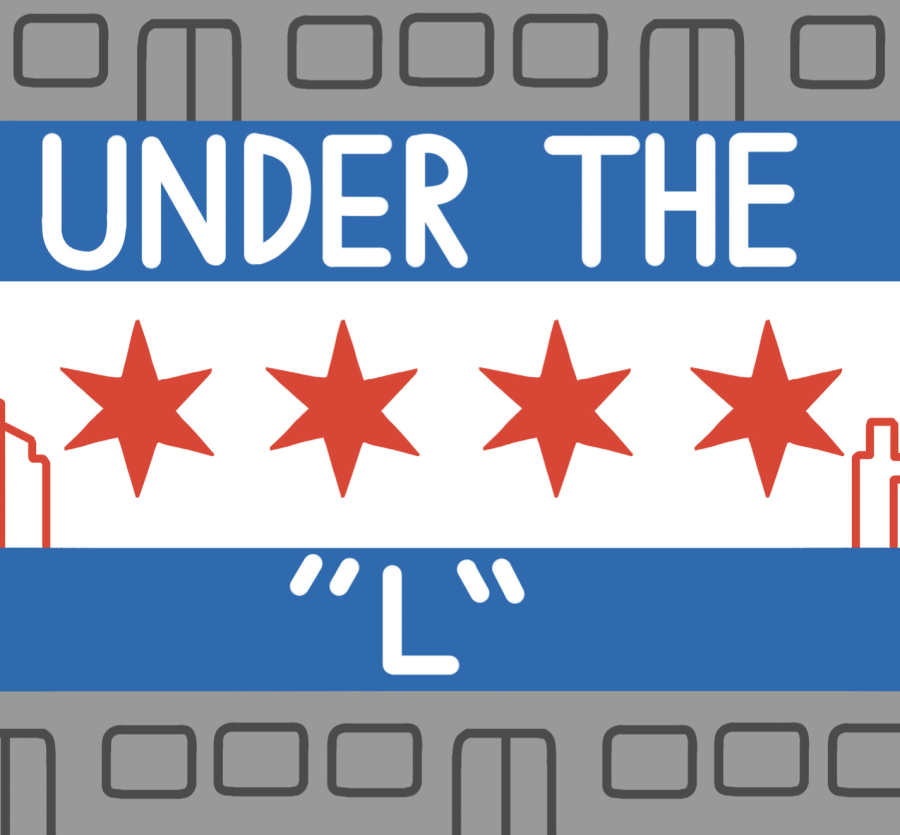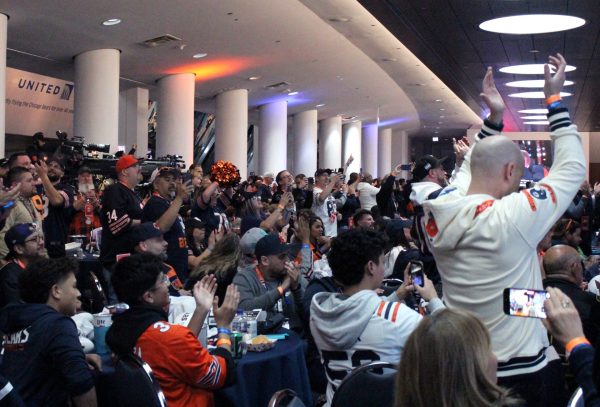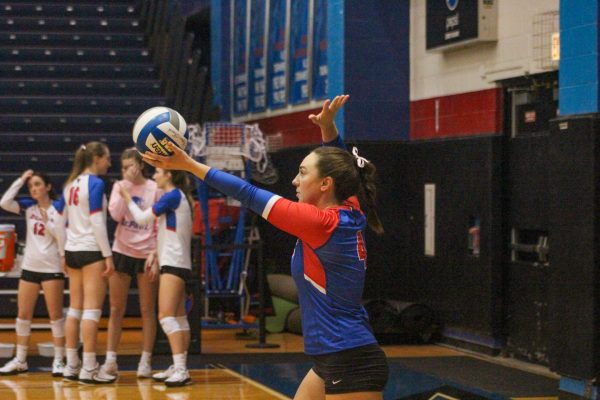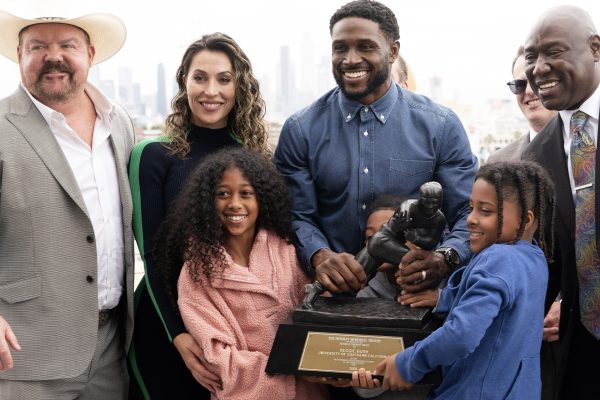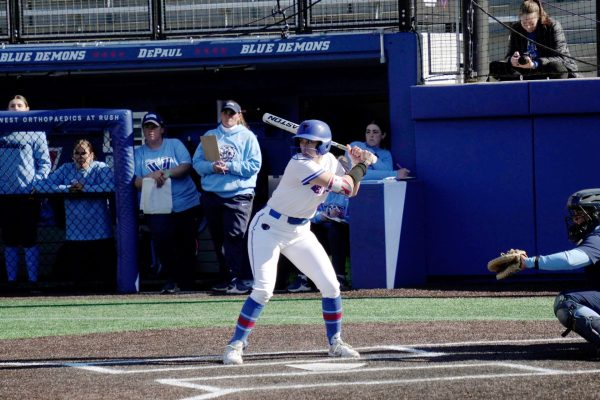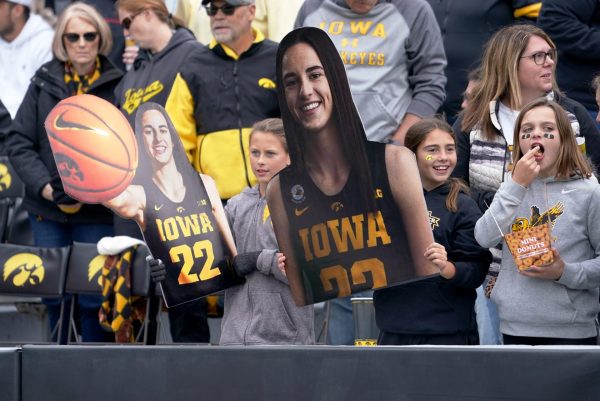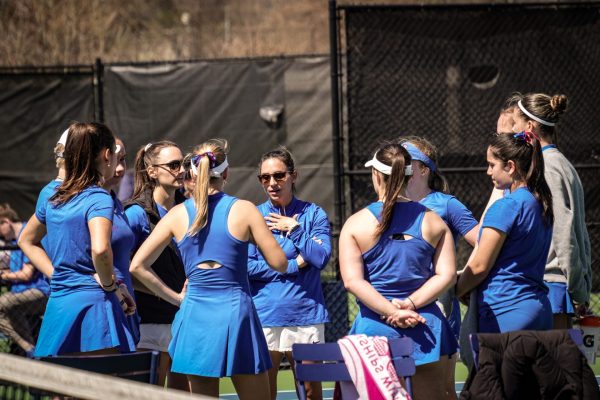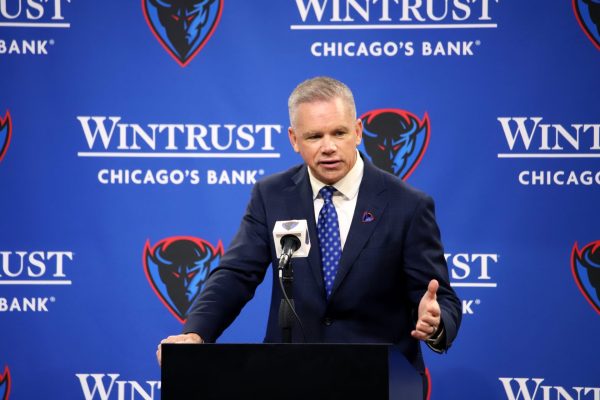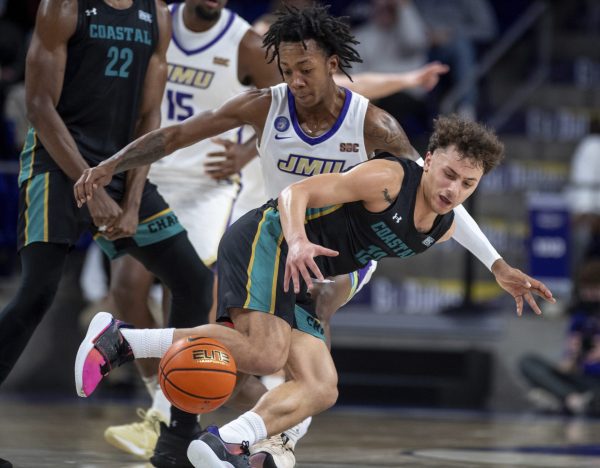DePaul Athletics signs “Under The L” partnership with Athlete Advantage
Name, Imagine and Likeness (NIL) has dramatically altered the direction of where college sports are going, specifically the resources that each school has. DePaul has very limited resources, but Athletic Director DeWayne Peevy has found a way to stay ahead of the curve.
“If you look at NIL, we can help our student athletes learn, be educated and be able to be compensated for the use of their name,” Peevy said. “When the state law changed at the end of last May, for the first time we could indirectly or directly assist them with deals, so we built into trying to help them engage even more with marketing themselves to different companies.”
If a school wants to institute NIL for its athletes, they will need to establish a collective, which DePaul has with Athlete Advantage.
“Our new partnership with Athlete Advantage is yet another way we are supporting DePaul’s student-athletes in the NIL era,” said Peevy in a statement on Sept. 1, 2022. “This partnership will allow Athlete Advantage to assist DePaul student-athletes with sourcing NIL business opportunities while remaining fully compliant with all NCAA, State of Illinois, and DePaul university laws, regulations, policies, and guidelines.”
Peevy has partnered with Athlete Advantage to establish a NIL collective at DePaul called “Under the L.” According to the website, it was created to provide opportunities for all DePaul fans to contribute and engage with the athletes they passionately support through various NIL activities.
The initiative is gaining steam outside of Chicago and throughout the college sports world. Chicago native and current Vermont women’s basketball broadcaster Ryan Zimmerman has caught attention to it.
“I think the collective is a creative idea since I think it accomplishes two goals,” Zimmerman said. “It helps athletes get much needed compensation while they’re in school, but it also helps fans and alumni feel more connected to the athletic department and their donations matter.”
If fans support student athletes and subscribe monthly, they will be rewarded with various membership levels that are available with tons of perks. Each fan can choose the membership level they want between the Blue, Purple, Yellow, Brown, Green and Red Lines.
The cheapest subscription is the Blue Line, which costs $25 per month and includes a club membership, access to the Under The L (UTL) Club Marketplace, 15% discount on all apparel in the UTL Club Marketplace, exclusive player content, the UTL Club Sticker, two tickets to the UTL Blue-Red Scrimmage and two tickets to a Unique Fan Experience.
“I think it’s rightly priced for now, but could create problems for athletics later,” Zimmerman said of the collective subscription pricing. “Obviously, you want the members that make larger donations to get their money’s worth and provide cool benefits to them, but I think it has potential for DePaul to lose money.”
The most expensive subscription is the Red Line, which costs $1,000 per month includes entries into UTL Golf Outing along with a student-athlete dinner.
“I think the biggest challenge is understanding it,” Peevy said. “A lot of people only know about what they read on social media, and it’s a totally different story to what we’re educating our supporters and people that are close to the program about. The other challenge is the fact it’s not a tax deductible gift at this point given to our collective.”
Peevy and the rest of the athletic department has been promoting the collective on social media, trying to gather interest from fans and donors. The collective is targeted towards donors and is a way for them to help fund athletics to bring in more talent using NIL money.
“I know we’re planning on some more video content that should be going out this month,” Peevy said of their marketing strategy for “Under the L.” “We basically really put all hands on deck focusing on NIL engagement and fundraising in the short term since the season ended.”
The goal has been to find a way to get athletes at DePaul compensated for their NIL, but even with them being compensated, not all athletes might be aware of the financial implications of their deals.
“Potential tax implications are always something for young athletes to keep in mind while they sign these deals,” LaPort accountant Jerald Lyda said of the impact that NIL deals have on athletes. “College athletes need to report any NIL earnings as taxable income, even though they are not employees of the university.”
DePaul athletics over recent years have struggled to secure top-tier talent for men and women’s basketball. As of recently, NIL has played a big role in players departing from programs according to Alabama head coach Nick Saban. Not only has DePaul been affected, but all schools around the country in every sport.
Funding is a crucial point in building a successful athletics program, and without NIL money, it could potentially be difficult to recruit and compete at a high level.
“It doesn’t seem to me that DePaul’s administration supports its athletic programs as well as it used to, while other schools in the Big East put them in great positions to succeed,” Zimmerman said. “And that just creates a better athletic and college experience.”
DePaul’s rival in UConn has had success with the NIL as early as last season when junior forward Adama Sanogo was the No. 7 ranked player in the country based on earnings. Sanogo made $776,000 in NIL money, while the second closest Big East player was No. 22 ranked Villanova freshman forward Cam Whitemore, who made $399,000.
DePaul has aspirations to compete at a high level in the Big East and plan to be creative and find ways to improve their resources to match the rest of their conference rivals. Peevy has the vision and mindset to get there, but it’s ultimately just a matter of putting his and the rest of the athletics department’s plans in motion as they look towards the future.


